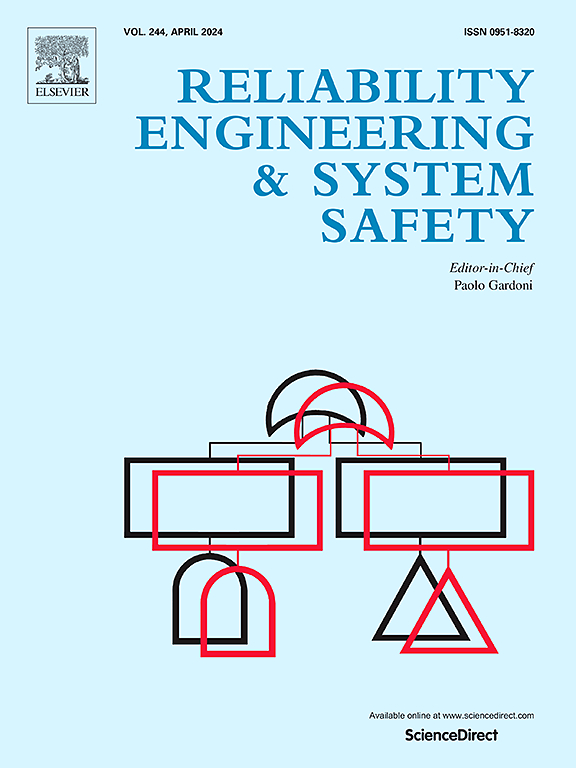Attack strategies and reliability analysis of Wireless Mesh Networks considering cascading failures
IF 9.4
1区 工程技术
Q1 ENGINEERING, INDUSTRIAL
引用次数: 0
Abstract
Wireless Mesh Networks (WMNs) are vital to modern infrastructure, and attacks on WMNs can lead to paralysis of interdependent systems, causing significant social and economic consequences. However, existing studies often assume all attacks coincide, focusing on cascading failures from a single perspective while neglecting specific attack strategies. This study is the first to apply sequential attack strategies to WMNs and conduct a comparative analysis with synchronous strategies. First, we propose a system model for WMNs that incorporates path loss and link capacity, representing real-world scenarios. Secondly, we introduce two novel reliability metrics, transmission reliability and reliability degradation rate, to quantify the impact of attacks. In the final case study, we analyze the effects of synchronous and sequential attack strategies under four node attack rules. Results reveal that sequential attack strategies dynamically identify and exploit critical nodes, causing prolonged degradation of transmission reliability and amplifying cascading failures. Compared to synchronous attack strategies, sequential attack strategies increase the global reliability degradation rate and reliability degradation rate during the attack phase by 28.62 % and 55.36 %, respectively. Therefore, sequential attack strategies should combine these two node attack rules to achieve maximum impact. These findings confirm that the proposed sequential attack strategy effectively disrupts network performance and provides meaningful insights for developing WMN defense strategies.
求助全文
约1分钟内获得全文
求助全文
来源期刊

Reliability Engineering & System Safety
管理科学-工程:工业
CiteScore
15.20
自引率
39.50%
发文量
621
审稿时长
67 days
期刊介绍:
Elsevier publishes Reliability Engineering & System Safety in association with the European Safety and Reliability Association and the Safety Engineering and Risk Analysis Division. The international journal is devoted to developing and applying methods to enhance the safety and reliability of complex technological systems, like nuclear power plants, chemical plants, hazardous waste facilities, space systems, offshore and maritime systems, transportation systems, constructed infrastructure, and manufacturing plants. The journal normally publishes only articles that involve the analysis of substantive problems related to the reliability of complex systems or present techniques and/or theoretical results that have a discernable relationship to the solution of such problems. An important aim is to balance academic material and practical applications.
 求助内容:
求助内容: 应助结果提醒方式:
应助结果提醒方式:


